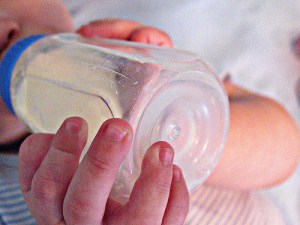
Photo by Nerissa's Ring.
This week was packed with incriminating evidence linking the endocrine disruptor bisphenol A (BPA) to an array of health risks. As we reported last week, a new study found regular, low-dose exposure to BPA might be far more dangerous than previously believed. Meanwhile, a University of Missouri report added to the growing pile of evidence that fetal exposure to the chemical can increase one’s likelihood of obesity, while a UK-based nonprofit organization, CHEM Trust, released a report [PDF] that includes BPA with a whole list of chemicals it calls “environmental obesogens” and diabetogens, along with persistent organic pollutants (POPs), arsenic, flame retardants, and phlalates.
As it turns out, this avalanche of bad news about BPA was not a coincidence. You see, last December, a federal judge ruled that the Food and Drug Administration (FDA) had been putting off responding to a 2008 petition by the Natural Resources Defense Council (NRDC) to ban the plastic additive in food packaging for too long, and they had to respond by the end of March. So, in a move that won’t surprise anyone who watches the agency regularly, the FDA waited until the last Friday of the month to do so.
According to the Los Angeles Times, FDA’s acting associate commissioner for policy and planning said the NRDC “hadn’t provided sufficient scientific evidence to change the current regulations.” The agency — which claims that it’s continuing to study BPA — also said that most science to date has only shown conclusive harm in laboratory animals.
The chemical — which mimics the body’s hormones — appears in the blood of as many as 90 percent of all humans. (The NRDC blog has a great rundown of all the current science surrounding BPA.)
In a post published on Friday, cleverly titled “FDA to Consumers: We’re still thinking about it. Sorry you’re still eating it,” NRDC Senior Scientist Gina Solomon points out that many manufacturers have already removed the chemical from things like baby bottles, can liners, and water bottles. But she adds, “It’s unfair for the FDA to continue to put the burden on consumers to pick and choose among products if they want to avoid exposure to this chemical, which is linked to a wide variety of health problems.”
Speaking of picking and choosing, have I mentioned my go-to baby shower gift? Well, thanks to you, FDA, it looks like I won’t stop buying these for the moms-to-be in my life any time soon.



